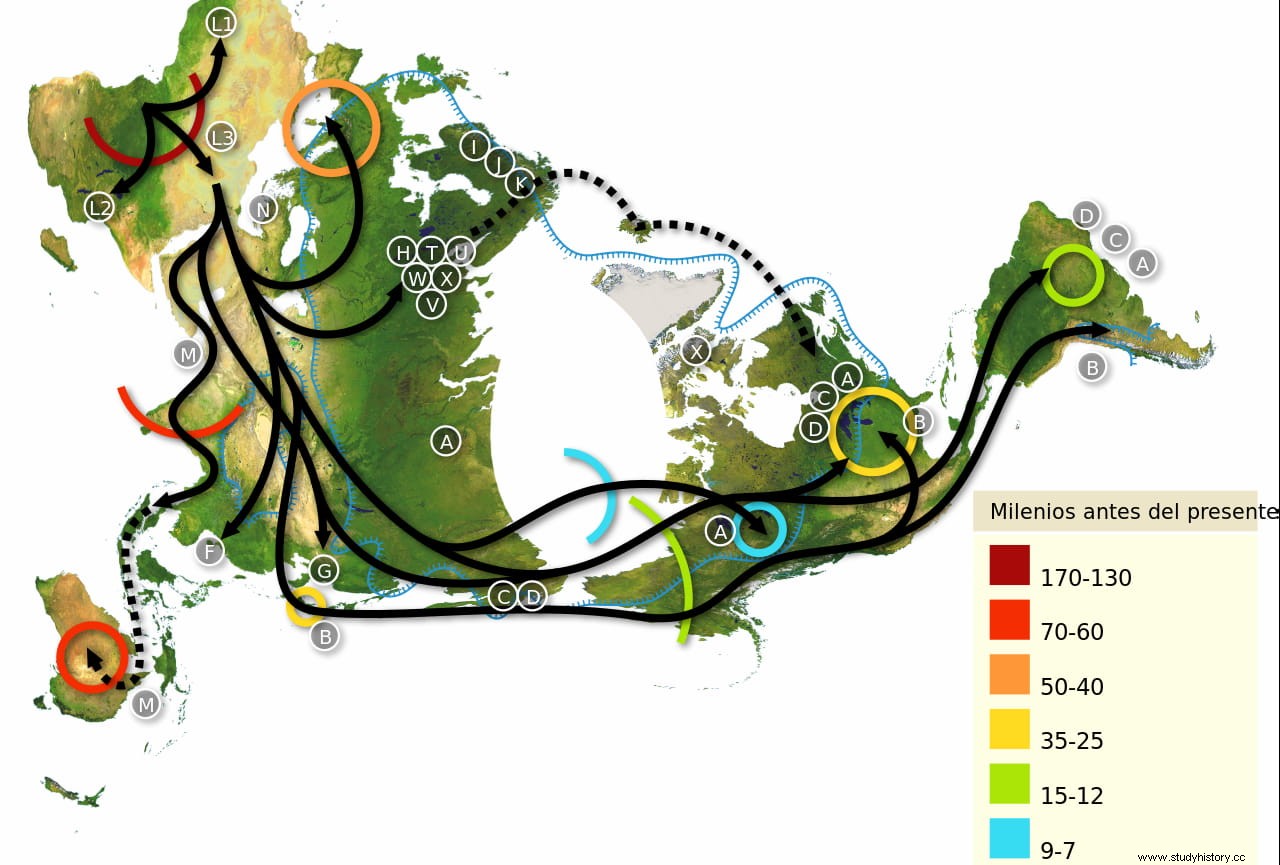For some time now, genetics has been expanding knowledge and field of action in the investigation of the Past of Man , so that today this discipline has almost as much weight in paleoanthropological studies as in field work. If we add another science to that, climatology , it is explained that what we are finding out about our ancestors allows us to clarify how the origins of the first Europeans were. And one of the things that appears is that the first ones, in reality, were not such.
Indeed, towards the end of the last ice age the population that inhabited what is now Europe disappeared and was replaced by the current one, from which we descend. This is indicated by the latest DNA analyzes carried out on fossil remains collected in various parts of the continent and which point to a rapid climate change as a determining factor because the previous settlers were not able to adapt adequately to the new environmental conditions.
The archaeogeneticist and doctoral student Cosimo Posth , in collaboration with some thirty specialists from the University of Tübingen (Germany), he is the author of the thesis published by the journal Current Anthropology . To do this, he focused on investigating the mutations found in the samples of mitochondrial DNA (which is transmitted through the mother) obtained from 55 skeletons from all over Europe (from the Iberian Peninsula to the Russian steppe) and corresponding to a period between 35,000 and 7,000 years back.

It must be taken into account that the European genetic heritage is very complex. It is known that the first modern humans They left Africa between 70,000 and 40,000 years ago and made contact with Neanderthals. Later, when the agricultural revolution About ten millennia ago, Middle Eastern farmers spread westward, progressively replacing native hunter-gatherers. 5,000 years ago nomadic horsemen arrived from Ukraine and also made their blood supply. But during all that time the European glaciation served as a barrier.
The first modern men, once called Cro-Magnons, had quite a genetic diversity and if it was previously thought to have been maintained, Posth's work seems to indicate otherwise. The Little Ice Age could become a weapon of natural semi-extinction which wiped out most of the individuals and prompted the survivors to spread out across the continent, probably mixing with other human groups that arrived from less extreme areas climatically speaking.
Thus, in 2013 geneticists identified large haplogroups who share distant common ancestors. A haplogroup is a large group of haplotypes , that is, from a combination of alleles at specific sites on a chromosome that are passed on together. "Basically all modern humans outside of Africa, from Europe to the tip of South America, belong to two super-haplogroups which are M or N" explains Post. Today, all humans of European descent have the mitochondrial haplotype N , while the M subtype is common throughout Asia and Australasia.
The team found that, in ancient peoples, haplogroup M prevailed until 14,500 years ago, when it disappeared mysteriously and suddenly. That haplotype no longer exists in today's Europe but shares, for 50,000 years, a common ancestor with today's inhabitants who have an M haplotype. In this sense, Posth clarifies that Europeans and Asians can descend from a group of human beings that it left Africa and quickly spread throughout the world about 55,000 years ago . It is speculated that the change in climate was decisive so that the small populations that belong to the M haplogroup were not able to survive in their habitat, and a new population, which carries the N subtype, replaced them.
Thus, to the glacial cold that had decimated the population, forcing small groups to take refuge inspecific less extreme areas -presumably from the Iberian Peninsula, Italy and the Balkans-, a rise in temperature happened. with the consequent changes (replacement of tundra by forests, extinction of mammoths and saber-toothed tigers...) that were excessive for those battered humans. Those from haplogroup M disappeared and those from N, perhaps better adapted, were able tospread again for an already warmer Europe.
